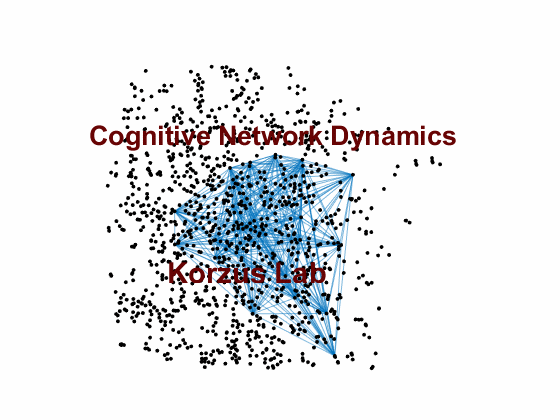Research
The laboratory studies medial prefrontal cortex (mPFC) circuit-level mechanisms that support fear discrimination learning, including how maladaptation in prefrontal circuits leads to neuropsychiatric vulnerability. Our studies combine multiple techniques that include large-scale imaging of neuronal dynamics, mouse molecular genetics, behavior, electrophysiology, optogenetics and computational analytics. Our laboratory recently developed in vivo calcium imaging of prefrontal cortex and hippocampus using head-mounted microscopes that measure fluorescent signals of neuronal activation in thousands cortical cells in freely moving mice during weeks of behavior. These head-mounted microscopes offer to dramatically improve investigations of neural assemblies and provide unmatched insights into understanding neural circuit dynamics by enabling real-time stable recordings in large numbers of single cells in living brain.
Neural circuits for fear discrimination learning
The prefrontal cortex integrates convergent inputs from higher cortical association and sensory regions with feedback information from areas including hippocampal, amygdalar, and thalamocortical pathways and sends output signals to cortical and subcortical areas, including direct projections to the cholinergic and monoaminergic neurotransmitter systems, to modulate cortical network activity. My research investigates how the prefrontal-amygdalar-hippocampal circuit acts via multiple pathways to exert both excitatory and inhibitory influences on fear responses under the central hypothesis that accuracy of fear memory is attained via mPFC-dependent neural circuit mechanisms. This hypothesis is based partly on our data demonstrating that fear discrimination learning is disrupted by the acute hypofunction of mediators of cellular and psychological memory consolidation, expressed in prefrontal circuit. These data indicate that certain types of prefrontal dysfunction likely contribute to overgeneralized fear, a clinical condition present in PTSD.
Prefrontal cortex and mental illness
Whereas current data link cannabis abuse in adolescence to increased risk for dependence on other drugs, depression, anxiety disorders and psychosis, the mechanism(s) underlying these adverse effects remain controversial. Our research indicates that abnormal interactions of neurodevelopment with the environment triggered by drug of abuse during neonatal or adolescent periods may permanently impair brain function, such as compromise inherent neuroprotection of the eCB (endocannabinoid system) of circuit integrity and neuroplasticity. The eCB system has been implicated in multiple brain functions, including synaptic plasticity and the homeostatic regulation of network activity patterns.
Selected Bibliography
Differential fear conditioning generates prefrontal neural ensembles of safety signals. Corches, A., Hiroto, A., Bailey, T. W., Speigel, J. H., 3rd, Pastore, J., Mayford, M., & Korzus, E. (2019). Behav Brain Res, 360, 169-184. doi:10.1016/j.bbr.2018.11.042
Long-Lasting Effects of Prenatal Ethanol Exposure on Fear Learning and Development of the Amygdala. Kozanian, O. O., Rohac, D. J., Bavadian, N., Corches, A., Korzus, E., & Huffman, K. J. (2018). Front Behav Neurosci, 12, 200. doi:10.3389/fnbeh.2018.00200
Rubinstein-Taybi Syndrome and epigenetic alterations. Korzus, E. in "Neuroepigenomics in Aging and Disease" Delgado-Morales, R. (ed.), Series Title: Advances in Experimental Medicine and Biology. Springer International Publishing AG, 2017. DOI: 10.1007/978-3-319-53889-1_3.
GLT-1-Dependent Disruption of CNS Glutamate Homeostasis and Neuronal Function by the Protozoan Parasite Toxoplasma gondii. David, C. N., Frias, E. S., Szu, J. I., Vieira, P. A., Hubbard, J. A., Lovelace, J., . . . Wilson, E. H. (2016). PLoS Pathog, 12(6), e1005643. doi:10.1371/journal.ppat.1005643
Prefrontal Cortex in Learning to Overcome Generalized Fear. Korzus, E. (2015). J Exp Neurosci, 9, 53-56. doi:10.4137/JEN.S26227
An animal model of female adolescent cannabinoid exposure elicits a long-lasting deficit in presynaptic long-term plasticity. Lovelace, J. W., Corches, A., Vieira, P. A., Hiroto, A. S., Mackie, K., & Korzus, E. (2015). Neuropharmacology, 99, 242-255. doi:10.1016/j.neuropharm.2015.04.034
CBP-Dependent memory consolidation in the prefrontal cortex supports object-location learning.Vieira, P. A., & Korzus, E. (2015). Hippocampus, 25(12), 1532-1540. doi:10.1002/hipo.22473
Prefrontal NMDA receptors expressed in excitatory neurons control fear discrimination and fear extinction. Vieira, P. A., Corches, A., Lovelace, J. W., Westbrook, K. B., Mendoza, M., & Korzus, E. (2015). Neurobiol Learn Mem, 119, 52-62. doi:10.1016/j.nlm.2014.12.012
Prefrontal consolidation supports the attainment of fear memory accuracy. Vieira, P. A., Lovelace, J. W., Corches, A., Rashid, A. J., Josselyn, S. A., & Korzus, E. (2014). Learn Mem, 21(8), 394-405. doi:10.1101/lm.036087.114
Impaired fear memory specificity associated with deficient endocannabinoid-dependent long-term plasticity. Lovelace, J. W., Vieira, P. A., Corches, A., Mackie, K., & Korzus, E. (2014). Neuropsychopharmacology, 39(7), 1685-1693. doi:10.1038/npp.2014.15
Manipulating the brain with epigenetics. Korzus, E. (2010). Nat Neurosci, 13(4), 405-406. doi:10.1038/nn0410-405
Impaired maturation of dendritic spines without disorganization of cortical cell layers in mice lacking. Barros, C. S., Calabrese, B., Chamero, P., Roberts, A. J., Korzus, E., et, al (2009). NRG1/ErbB signaling in the central nervous system. Proc Natl Acad Sci U S A, 106(11), 4507-4512. doi:10.1073/pnas.0900355106
Epigenetic mechanisms and gene networks in the nervous system. Colvis, C.M., Pollock, J.D., Goodman, R.H., Impey, S., Dunn, J., Mandel, G., Champagne, F.A., Mayford, M., Korzus, E., Kumar, A., Renthal, W., Theobald, D.E. & Nestler, E.J. (2005). J Neurosci, 25(45), 10379-10389. doi:10.1523/JNEUROSCI.4119-05.2005
Nuclear calcium/calmodulin regulates memory consolidation. Limback-Stokin, K., Korzus, E., Nagaoka-Yasuda, R., & Mayford, M. (2004). J Neurosci, 24(48), 10858-10867. doi:10.1523/JNEUROSCI.1022-04.2004
CBP histone acetyltransferase activity is a critical component of memory consolidation. Korzus, E., Rosenfeld, M. G., & Mayford, M. (2004). Neuron, 42(6), 961-972. doi:10.1016/j.neuron.2004.06.002
Signal-specific co-activator domain requirements for Pit-1 activation. Xu, L., Lavinsky, R.M., Dasen, J.S., Flynn, S.E., McInerney, E.M., Mullen, T.M., Heinzel, T., Szeto, D., Korzus, E., Kurokawa, R., Aggarwal, A.K., Rose, D.W., Glass, C.K. & Rosenfeld, M.G. (1998). Nature, 395(6699), 301-306. doi:10.1038/26270
Transcription factor-specific requirements for coactivators and their acetyltransferase functions. Korzus, E., Torchia, J., Rose, D. W., Xu, L., Kurokawa, R., McInerney, E. M., . . . Rosenfeld, M. G. (1998). Science, 279(5351), 703-707. doi:10.1126/science.279.5351.703
